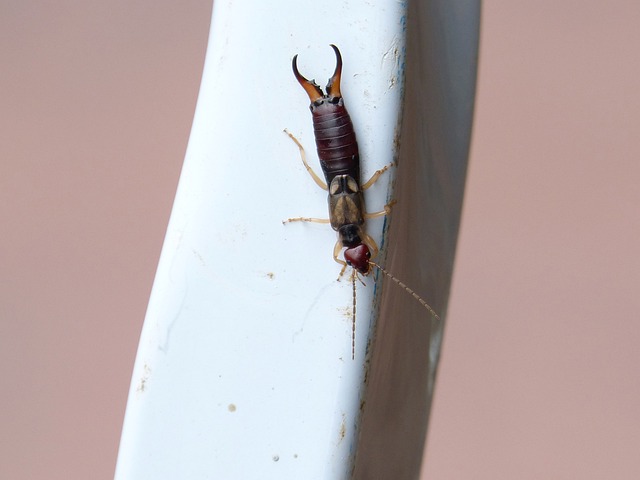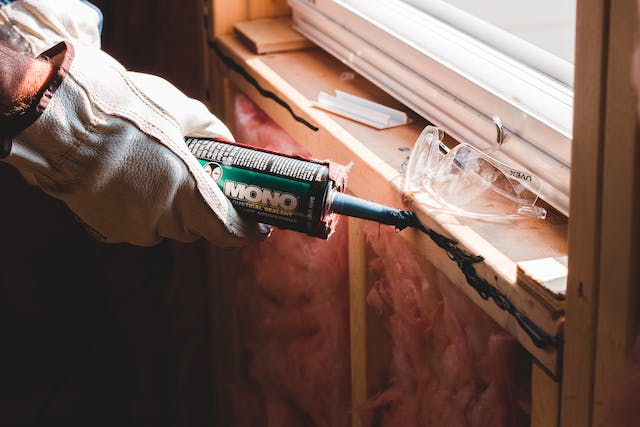When it comes to creepy crawlies, earwigs often find themselves the subject of myths, rumors, and fear. These small insects, characterized by their pincers at the end of their abdomens, have garnered quite a reputation for their supposed ability to inflict harm, especially their purported poisonous bite.
But are earwigs truly as menacing as they seem? Let’s dive into the world of earwigs, explore their biology, and finally answer the pressing question: are earwigs poisonous?
A Closer Look at Earwigs
Earwigs belong to the order Dermaptera, a group of insects known for their unique and easily recognizable pincers, technically called cerci. These pincers, which extend from the end of their abdomens, are the earwig’s defining feature. They use them for capturing prey, defending themselves, and navigating their environment.
These pests are omnivorous, consuming a variety of organic matter indoors and outdoors. Their diet ranges from plants, fungi, and dead insects to the occasional live prey, such as aphids or mites. When they sneak inside, you can even find them munching on your indoor foliage.
Earwigs occasionally become a nuisance in gardens, where they feed on plants and may damage certain crops. They tend to hide in dark, moist places during the day, like under mulch, rocks, or logs, and venture out to forage for food at night.
Despite their menacing appearance, earwigs are not typically harmful to humans or pets. They are generally not aggressive and prefer to hide during the day, becoming more active at night.
Are Earwigs Poisonous?
Are earwigs poisonous, or do they attack with their sharp pinchers? One of the most persistent myths surrounding earwigs is the belief that their pincers are venomous and can deliver a painful or poisonous bite
But what does it really mean to be poisonous?
An item or organism is considered poisonous when direct contact, ingestion, or skin absorption can cause harm. The harmful substance produced is usually present without active delivery, as seen in poisonous plants or chemicals, where the organism producing it does not actively dispense the poison.
In contrast, “venomous” describes organisms, such as snakes or spiders, that actively deliver venom through specialized structures like fangs or stingers. Venom is injected into another organism, typically for defense or to immobilize prey, and can cause harm when it enters the bloodstream.
So, are earwigs poisonous or venomous?

While earwigs have pincers, they are not venomous and pose no direct threat to humans. They do not transmit diseases, and their pincers are not poisonous or venomous. While they may occasionally enter homes, they are not vectors for disease and do not pose a significant health risk.
In rare cases, an earwig may use its pincers in self-defense if provoked or handled.
However, the outcome is typically no more severe than a slight pinch, similar to what you might experience if nipped by a fingernail. Earwigs do not possess poison or venom, so the concept of a poisonous earwig bite is entirely a product of myth and misconception.
Eliminating Earwigs with proof.
So, are earwigs poisonous? No, you won’t have to worry about these little pests causing you any pain. But to proactively tackle earwig issues and maintain a pest-free home, you can try these preventive and elimination measures:

Seal Entry Points: Regularly inspect your home’s exterior for cracks, gaps, and openings that could provide earwigs access to your living spaces. Seal them effectively using caulk or weatherstripping to prevent earwigs from infiltrating your home.
Reduce Moisture: Since earwigs are naturally drawn to moisture, it’s essential to address any sources of dampness within your home. Fix leaky pipes, faucets, or other water-related issues that cause humidity. Adequate ventilation is key to mitigating moisture buildup, making your home far less appealing to these moisture-loving pests.
Outdoor Lighting: The type of outdoor lighting you use can influence the number of earwigs around your home. Consider installing yellow or sodium vapor lights instead of standard white lights. These softer hues are less attractive to earwigs and can deter their gathering near your home.
Protect Your Garden: To keep your garden earwig-free, remove debris, ensure proper drainage to reduce moisture, elevate planters, and prune for better airflow.
Check out this video to learn about earwig traps you can use in your garden! Want to learn more? Take a look at our article: “Earwig Trap: 4 Perfect Solutions.”
In situations where earwigs have already staged an invasion within your home, it’s time to call in the professionals. Our experienced team is well-equipped to tackle the infestation and keep these pests from invading your home.
Our process kicks off with a thorough inspection, helping us grasp the full scope of the earwig issue and identify the entry points.
Following the inspection, we craft a personalized treatment plan to send these pests packing. We’ll apply treatments inside and outside your home, establishing a barrier to keep earwigs away from what you hold near and dear.

Plus, earwigs are one of the pests covered by our Pest-Free Guarantee service! When you sign up for our Pest-Free Guarantee, we’ll visit your home throughout the year to keep you pest-free, no matter the season.
With proof. Pest Control’s team of experts on your side, you can sit back, relax, and anticipate your new earwig-proof home. Contact us today!

